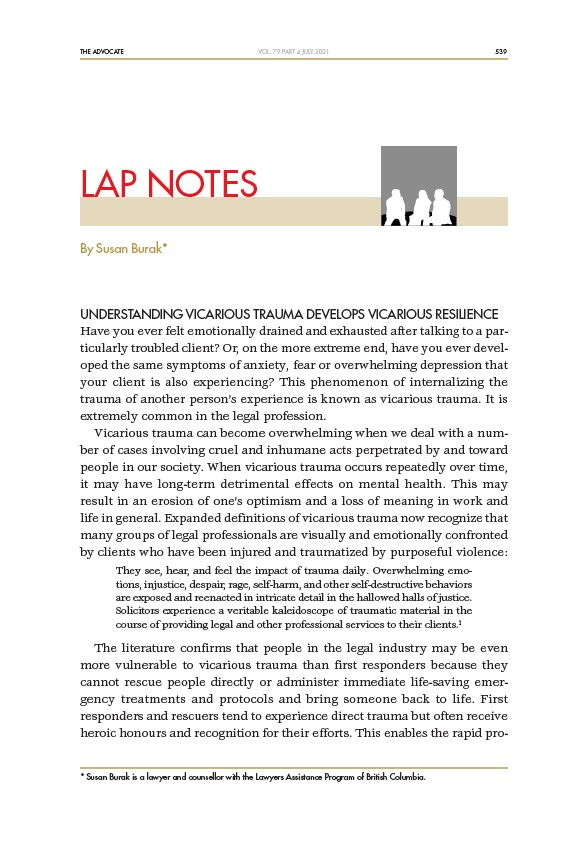
THE ADVOCATE 539
VOL. 79 PART 4 JULY 2021
LAP NOTES
By Susan Burak*
UNDERSTANDING VICARIOUS TRAUMA DEVELOPS VICARIOUS RESILIENCE
Have you ever felt emotionally drained and exhausted after talking to a particularly
troubled client? Or, on the more extreme end, have you ever developed
the same symptoms of anxiety, fear or overwhelming depression that
your client is also experiencing? This phenomenon of internalizing the
trauma of another person’s experience is known as vicarious trauma. It is
extremely common in the legal profession.
Vicarious trauma can become overwhelming when we deal with a number
of cases involving cruel and inhumane acts perpetrated by and toward
people in our society. When vicarious trauma occurs repeatedly over time,
it may have long-term detrimental effects on mental health. This may
result in an erosion of one’s optimism and a loss of meaning in work and
life in general. Expanded definitions of vicarious trauma now recognize that
many groups of legal professionals are visually and emotionally confronted
by clients who have been injured and traumatized by purposeful violence:
They see, hear, and feel the impact of trauma daily. Overwhelming emotions,
injustice, despair, rage, self-harm, and other self-destructive behaviors
are exposed and reenacted in intricate detail in the hallowed halls of justice.
Solicitors experience a veritable kaleidoscope of traumatic material in the
course of providing legal and other professional services to their clients.1
The literature confirms that people in the legal industry may be even
more vulnerable to vicarious trauma than first responders because they
cannot rescue people directly or administer immediate life-saving emergency
treatments and protocols and bring someone back to life. First
responders and rescuers tend to experience direct trauma but often receive
heroic honours and recognition for their efforts. This enables the rapid pro-
* Susan Burak is a lawyer and counsellor with the Lawyers Assistance Program of British Columbia.